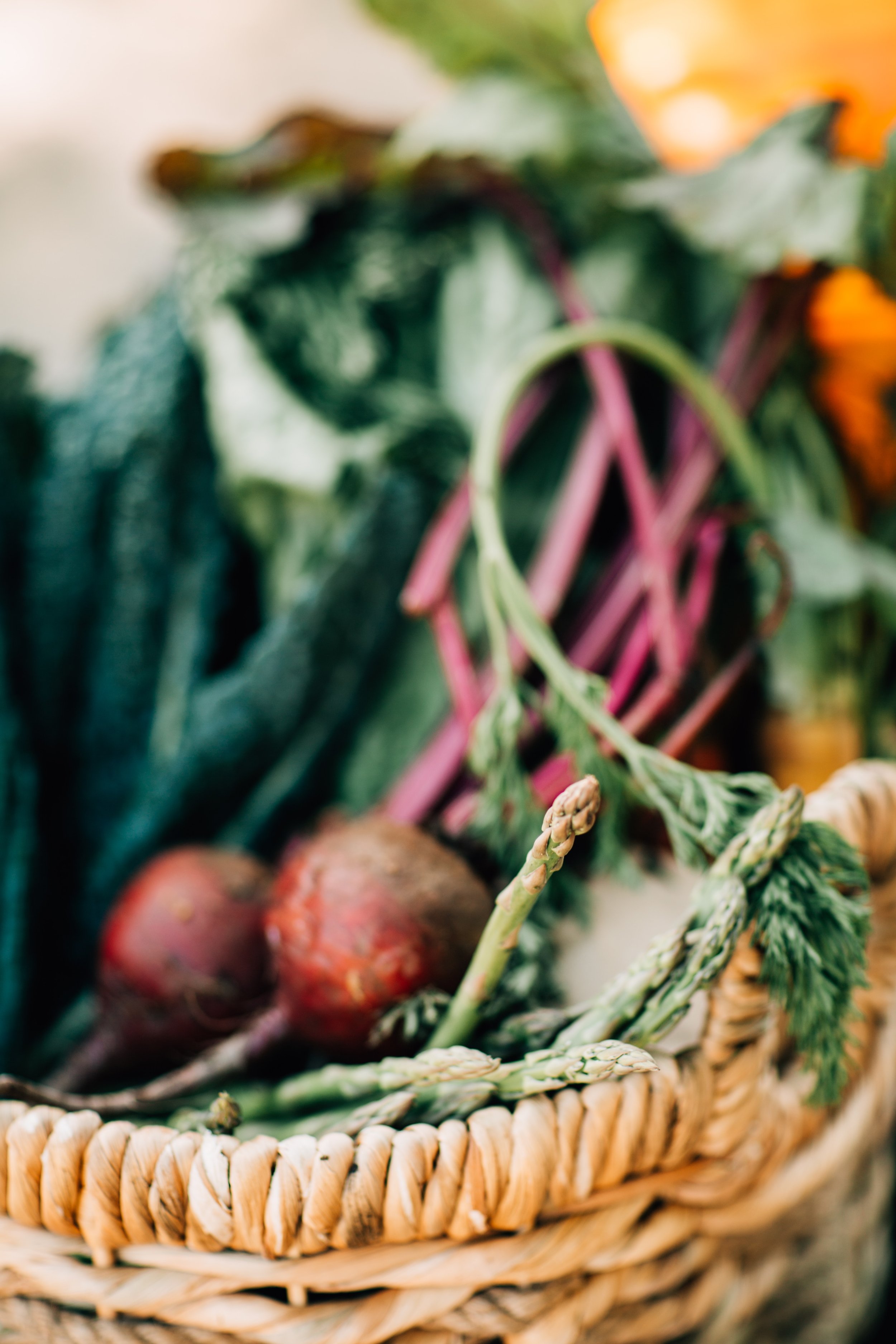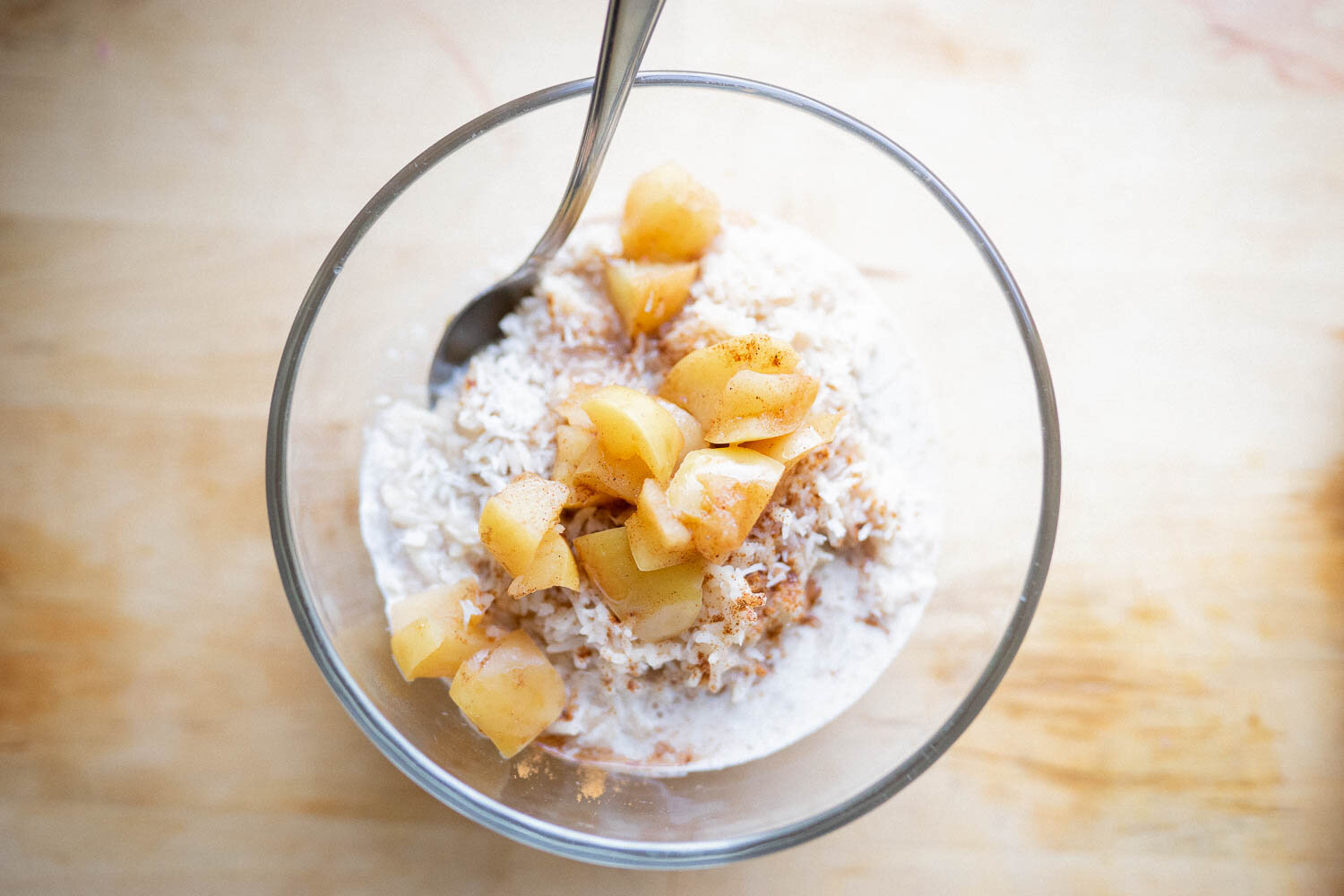
Ayurvedic Golden Milk
Golden milk is revered as one of Ayurveda’s nourishing elixirs of health. It is a tonifying beverage said to build “Ojas” the immune boosting force that offers resilience and vitality.
Ayurvedic Sushi Bowl
Enjoy a plant-based, vegan and gluten-free Ayurvedic Sushi Bowl that boasts a diverse nutrition profile and incorporates all 6 tastes. While adaptable for any season, the primary grain of rice offers a sweet profile to help ground any Pitta / Vata imbalances. Keep it simple as a bowl or get creative and make it a sushi roll!
Golden Green Curry with Cilantro Lime Rice
Golden green curry boasts a robust spice profile that aids in digestion and kindles agni. The medley of spices offer a variety of health-promoting benefits from anti-inflammation to supporting heart health. I love this recipe because it allows for cooking creativity, while being forgiving. Variations for all Ayurvedic doshas!
3 Easy Ayurvedic Date Recipes - Dessert or Snack!
Three quick and easy date recipes for your sweet fix! Delight in Tahini Stuffed Dates Boats, Pecan Pie Bites or a Ojas building Date Shake. Dates are revered as an Ayurvedic superfood. They are high in antioxidants and said to nourish our “ojas,” our immune boosting life force. Considered Sattvic in nature, dates make a a nutritive tonic that promote peace of mind.
Heart Opening Cacao Elixir
Cacao is a plant that has been woven into various cultural traditions for thousands of years. It has been used in indigenous ritual and ceremony with research showing evidence of the Mayan culture using cacao as far back as 600 BC. It’s botanical name, Theobroma translates to ‘food of the Gods.’ The plant itself has many magical properties and boasts health benefits. From an Ayurvedic perspective, it is considered an aphrodisiac, inviting greater sensuality and desire.
Pad Thai
For as long as I can remember, pad thai was my go-to comfort food. This stir-fry noodle dish is warm, sweet and grounding - so no wonder it falls in the category of comfort - it’s a Vata pacifying, Autumn favorite. A signature ingredient in most thai dishes is Tamarind paste, a sour pulp that promotes digestion and assimilation. After decades of relishing in these flavors, I finally decided to make it myself with an Ayurvedic and health conscious twist.
Seared Tofu Ginger Sesame Salad
A salad that serves up a happy gut, this includes variety of plant-based goodness stacked in one dish! When the microbes in our gut are fed plants, fiber, prebiotics and more, they work in collaboration with our bodies to support more resilient immune system, production of anti-inflammation compounds, and metabolize neurochemicals that boost serotonin (happy hormones)!
Full Moon Ghee
Ghee is one of Ayurveda’s sacred tonics, considered to be tri-doshic and beneficial for building “Ojas” or our immune boosting vitality. It boasts a wealth of health benefits and promotes proper digestion. It is believed that the best time to make ghee is during the waxing full moon which imbues the moon’s deeply nourishing essence of into the rejuvenate elixir. Here is how to make your own ghee!
Spiced Pear Breakfast Porridge
Enjoy this warming breakfast, particularly beneficial for balancing excess Vata and Pitta. With nourishing ingredients such as pears, chia and quinoa…this breakfast boasts a good source of fiber, nutrients and more.
Digestive Spice Blends for Vata, Pitta and Kapha
Spices have the ability to enhance our metabolic activity and affect various tissues of the body in integrative support. Below are three Ayurvedic spice blends - for Vata, Pitta and Kapha - to assist you cooking ritual with flavor, intention and enhanced Agni or digestive fire.
Ayurvedic Gatorade
A simple and effective beverage to replenish your hydration and restock electrolytes. Perfect for Pitta and Vata imbalances.
Sweet Stewed Apples
A delicious delight when your body and heart need warm, grounding nourishment. Stewed apples are easy to digest and grounding, especially for Vata imbalances are in the colder Autumn and Winter months.
Slow Cooked Coconut Cardamom Rice Pudding
Enjoy this warm, grounding breakfast pudding or call it a dessert. This recipe is particularly pacifying for Vata and Pitta. The cardamom helps sooth digestion, while the warm coconut hydrates and nourishes the tissues of the body.
Un-Beet-able Hummus
Un-beet-able hummus makes for a delicious addition to any meal or grounding snack. It’s easy to make. Beets are loaded with essential nutrients and can be especially beneficial for Pitta imbalances. Chickpeas are a plant-base protein packed with fiber.
Red Velvet Beet + Lentil Soup
With beets, lentils and digestive spices, this soup is perfect for grounding + nourishing.
Carrot Ginger Soup
A grounding, warming soup packed with carotenoids and antioxidants which protect and enhance immunity. Carrots are known for being a good source of beta-carotene, fiber, vitamin K, potassium and antioxidants.
Green Tea Ginger Shiitake Miso Soup
A crockpot favorite, inspired by Jennifer Iserloh. Love this for it’s antioxidant kick, thanks to the green tea. Detox super powers due to the kale. Shiitake mushrooms, serving up the amazing immunity booster.
Turmeric Golden Oats
Enjoy this antioxidant-rich breakfast to start your day feeling grounded. Great for Vata imbalances, cold weather, and soothing digestion.
Ojas Energy Balls
A Tri-doshic, powerpacked snack to support strength, immunity and vitality.



















